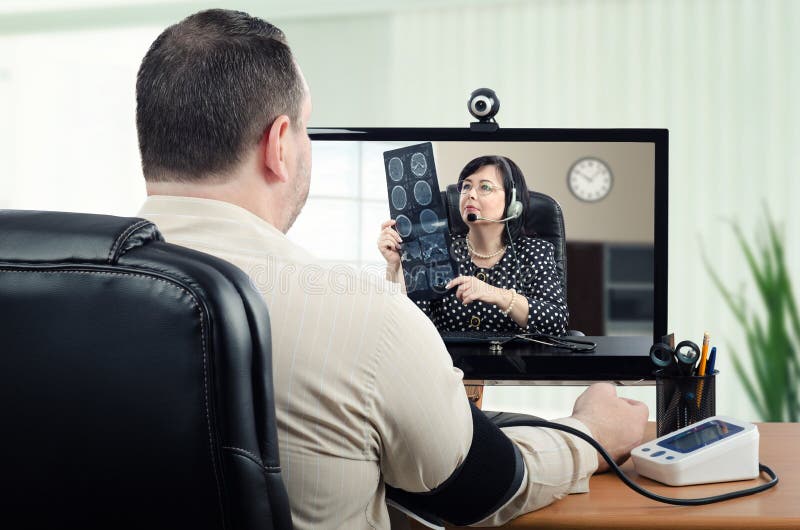Teledoctors: Connecting the Space Between People and Doctor
The emergence of teledoctors represents a considerable change in the medical care landscape, offering remedies to long-lasting access problems encountered by patients and carriers alike. By integrating telemedicine right into typical methods, healthcare systems can get to remote and underserved populations, giving crucial medical assessments without the barriers of range and traveling. This standard shift not only boosts patient engagement yet also optimizes source allowance for providers. Nevertheless, the extensive adoption of teledoctors increases vital questions about the sustainability of such practices and the implications for future medical care distribution. What difficulties lie in advance in guaranteeing this model's efficiency and equity?
Rise of Telemedicine

The surge of telemedicine is likewise fueled by the need for affordable healthcare. Medical care systems globally are under pressure to decrease expenses while maintaining quality treatment, and telemedicine offers a practical option. By decreasing the requirement for physical check outs, telemedicine reduces above prices for medical care facilities and eventually reduces the economic problem on clients.
Furthermore, the COVID-19 pandemic worked as a driver, accelerating the adoption of telemedicine techniques. Social distancing actions and the demand to lessen direct exposure risk demanded a change towards remote examinations, motivating regulatory bodies to adjust and sustain telehealth solutions. This change has not only tried and tested telemedicine's effectiveness however likewise its potential to progress as a staple element of modern-day health care systems.
Advantages for People
As telemedicine remains to reshape medical care shipment, clients stand to get considerably from this change. Mainly, telemedicine improves availability, enabling individuals in remote or underserved areas to get in touch with health care providers without the requirement for substantial travel. This is specifically advantageous for individuals with flexibility concerns or those residing in country regions where health care centers may be scarce. Telemedicine additionally offers clients the comfort of getting clinical advice and therapy from the comfort of their homes, lowering the moment and expense associated with traveling to a health care center.
Additionally, telemedicine supports continuity of treatment by helping with routine follow-ups and tracking, which are crucial for managing persistent conditions. People can conveniently arrange consultations and gain access to medical care services outside standard office hours, suiting their active way of livings. This adaptability brings about enhanced person involvement and adherence to treatment strategies, possibly resulting in much better health and wellness outcomes.
Furthermore, telemedicine can assist minimize the risk of infection transmission, an issue enhanced by the COVID-19 pandemic. By decreasing the requirement for in-person visits, individuals can stay clear of congested waiting spaces and reduce direct exposure to transmittable ailments. Inevitably, telemedicine encourages individuals by offering timely, effective, and personalized healthcare solutions.
Advantages for Service Providers
For doctor, telemedicine supplies considerable advantages that boost the efficiency and reach of their technique. By leveraging electronic modern technology, carriers can prolong their solutions to a wider market, including those in remote or underserved areas. This not only reduces geographical barriers yet likewise maximizes client retention and procurement by making health care extra obtainable.
With telemedicine, the requirement for physical space decreases, permitting providers to save on actual estate and functional costs. This flexibility can lead to enhanced person examinations per day, therefore enhancing earnings possibility.
Telemedicine also promotes an extra collective environment for doctor. teledoctors. It makes it possible for seamless sharing of patient info among specialists, boosting analysis precision and therapy outcomes. Furthermore, electronic platforms can incorporate with electronic wellness documents (EHRs), boosting data precision and improving management jobs
Moreover, telemedicine improves person fulfillment, which is vital for company online reputation and success. By using convenient and prompt treatment, companies can enhance person commitment and engagement, further strengthening the provider-patient relationship.
Overcoming Challenges
While telemedicine supplies various advantages for health care companies, it also offers challenges that require mindful factor to consider. One significant challenge is ensuring data privacy and safety and security. As person details is transferred digitally, the risk of information breaches rises, necessitating durable cybersecurity steps. Medical care companies need to stick to rigorous guidelines like HIPAA to shield sensitive information, consequently needing financial investment in safe and secure systems and recurring personnel training.
Another challenge is the electronic divide, which can prevent accessibility to telemedicine services. Not all people have equal accessibility to the necessary innovation or internet connectivity, specifically those in underserved or rural locations. This variation can aggravate existing health care inequalities, making it important for companies to check out alternative options, such as partnerships with area organizations, to bridge this gap.
In addition, there are constraints in carrying out physical exams from another location. Specific conditions require in-person assessment, highlighting the need for a hybrid model that integrates telemedicine with traditional sees. Service providers need to navigate these difficulties by developing procedures to identify when telemedicine is appropriate and ensuring smooth shifts between virtual and in-person care.
Future of Medical Care
The future of healthcare is positioned for a transformative development, driven by the rapid integration of modern technology and advancement. Central to this shift site web is the increase of telemedicine, which is redefining exactly how clinical services are accessed and provided. With advancements in digital communication, telehealth platforms are ending up being more innovative, providing real-time appointments, remote person tracking, and individualized treatment plans. This not only improves person convenience yet also broadens accessibility to medical care, particularly in rural and underserved locations.
Expert system (AI) and artificial intelligence are likewise established to play crucial roles. These modern technologies can assess huge amounts of data, giving predictive understandings right into person health and wellness, improving diagnostic precision, and individualizing therapy strategies. AI-driven tools can boost doctor' capabilities, leading to more enlightened decision-making and far better patient outcomes.
Additionally, wearable technology and Web of Medical Things (IoMT) tools are changing client interaction and aggressive health and wellness monitoring. These gadgets allow continuous health tracking, enabling for early discovery of prompt treatments and possible issues.
As these innovations continue to breakthrough, they promise to develop a much more effective, available, and patient-centric healthcare system, inevitably connecting the gap between individuals and doctor. - teledoctors
Verdict
Teledoctors are transforming health care by considerably see here enhancing availability and effectiveness through remote assessments. This innovation supports individuals in underserved areas by giving prompt medical suggestions without calling for physical visits, thus improving person engagement and continuity of treatment. Health care suppliers profit from extra efficient time management and enhanced cooperation possibilities. Regardless of difficulties such as regulatory concerns and technological obstacles, the future of medical care shows up reliable and progressively inclusive because of the combination of telemedicine into traditional care designs.

As telemedicine proceeds to reshape medical care delivery, people stand to acquire considerably from this change. Primarily, telemedicine improves ease of access, allowing clients in remote or underserved locations to seek advice from healthcare companies without the need for substantial travel. Telemedicine additionally provides patients the convenience of receiving clinical advice and treatment from the comfort of their homes, decreasing the time and price linked with taking a trip to more tips here a healthcare facility.
Eventually, telemedicine equips patients by offering prompt, reliable, and personalized health care solutions.